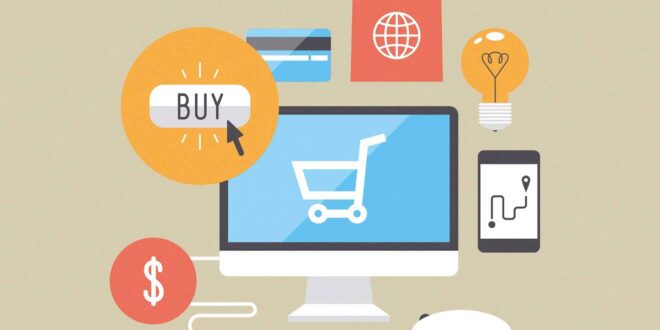Everyone knows eBay as a profitable platform for aspiring and proficient merchants with numerous users around the globe. eBay will be a perfect fit if you chase a broad international audience. But at the same time, competition is challenging, particularly for those beginning from the ground up.
As a newbie to the website, you may be in the dark about the whole “selling on eBay” topic and how to lure in shoppers. This guide will tell you in detail what to anticipate from the platform and the fundamentals you need to launch your online sales on eBay.
Is it worth selling on eBay in 2024?

Despite its long lifespan, eBay holds a prominent spot in the retail internet environment. With 130+ million active users, it is still the second-most-visited online marketplace globally. Apart from a vast audience, eBay attracts merchants with a range of selling choices. You can list goods for a fixed price or for bidding. Additionally, you get the flexibility to use your product photographs and write your own descriptions.
For those wishing to start a business on the platform, there is still an immense chance for success if the proper steps are taken.
Step 1. Complete registration
Making an eBay account is easy. Simply go to the homepage and hit the “Register” button in the top left corner. You’ll be asked for basic information, such as your name, address, and phone number.
If you already have an established business, opt for a business profile, which involves submitting official credentials. Some features of the business profile are an extensive selling toolset and the ability to raise selling limits.
Once you have signed into your eBay account, you can access the seller dashboard to view your trading opportunities.
Step 2. Review selling expenses
Becoming an eBay seller may be free, but you must pay when using a personal or a business profile. eBay charges the following:
- Insertion fees for each listed item and a category
- Final value fee for every finished transaction
- Payment processing fees for a purchase made with a credit/debit card, or other payment methods
- Fees for advertisements, extra services, and listing upgrades
You can read up on those fees in the Seller Center portal.
To save money on fees and get more free listings each month, consider signing up for an eBay shop subscription package, which includes marketing features to grow your shopper base.
Step 3. Research for profit-making items

Don’t randomly pick products to sell on eBay without evaluating their demand, cost-effectiveness, and competition. Invest some time into research – this will ensure a positive return on your financial investment.
To get a good idea of how well an item is selling:
- Calculate its sell-through rate.
- Check the number of active and sold listings in eBay’s search results.
- Divide the number of sold listings by the number of active listings and multiply by 100.
A high sell-through rate indicates there is a great demand for the item.
Aim for goods with at least a 50% sell-through rate. Anything below that level suggests that the demand for that item is low, so you might have to wait a little longer for it to sell. Also, you can look into the list of top-selling things compiled and constantly updated by eBay.
Step 4. Maximize listings’ visibility
Launch a new eBay listing by hitting the “Sell” button at the top of the page. Fill out the listing with the product name or ID and include the category, image, title, description, and other necessary data.
Take note of eBay tips regarding the quality of listings. Shoppers won’t be able to come across your items unless you put searchable phrases and words in the title and description. Spend extra time crafting the item’s description, indicate sufficient details about the color, material, size, dimensions, and brand name. Narrow product info could be a massive dealbreaker for buyers.
If you aren’t sure what details to describe and which keywords to use, examining the corresponding listings of your competitors can spark some ideas.
Step 5. Prioritize customers

This may seem obvious, but exemplary customer service is vital to a thriving eBay store. When a customer orders from your store, it marks the start of the connection between you and them. If your service leaves a positive impression, shoppers are likelier to return and recommend your goods to their friends. The higher the praise you get, the better your merchant’s rating and search result rankings.
To make shoppers happy, there are only a few principles to stick to :
- Send out items in the scheduled timeframe
- Take action on orders quickly
- Answer customer inquiries without delay
- Adhere to refund and return policies presented on eBay
Step 6. Use automated eBay integration
Once you set up some listings and get your eBay sales off the ground, you’ll need to think of organizing your internal processes and automating listing updates. As your store grows, you must focus on its further development. You won’t have as much time to control stock, orders, and other monotonous tasks.
Many digital vendors rely on automated software solutions to put their sales business in order. The application offers a hassle-free eBay integration (https://m2ecloud.com/ebay-integration.html) with Shopify and other well-known platforms, keeping your marketplace accounts, shipments, and inventory in sync from one centralized spot.
Even if you don’t have an external store, you can try a dedicated Cloud Catalog and enjoy the efficiency of automated eBay listing & stock updates. The app makes creating eBay listings fast and straightforward, auto-suggests eBay categories and other info, letting users instantly list items on 23 global eBay marketplaces.
Connecting eBay profile to M2E Cloud is easy and requires no technical knowledge. The intuitive interface will guide you through every needed step without extra assistance.
The bottom line
eBay’s brand is recognizable and trustworthy, so finding your customer there shouldn’t be a problem. Still, beginning an eBay journey may be difficult for novices, and hopefully, our guide will simplify the process for you. You might need to experiment with different strategies and approaches to establish a flourishing digital store, but all these efforts will surely pay off.
 Imagup General Magazine 2024
Imagup General Magazine 2024



